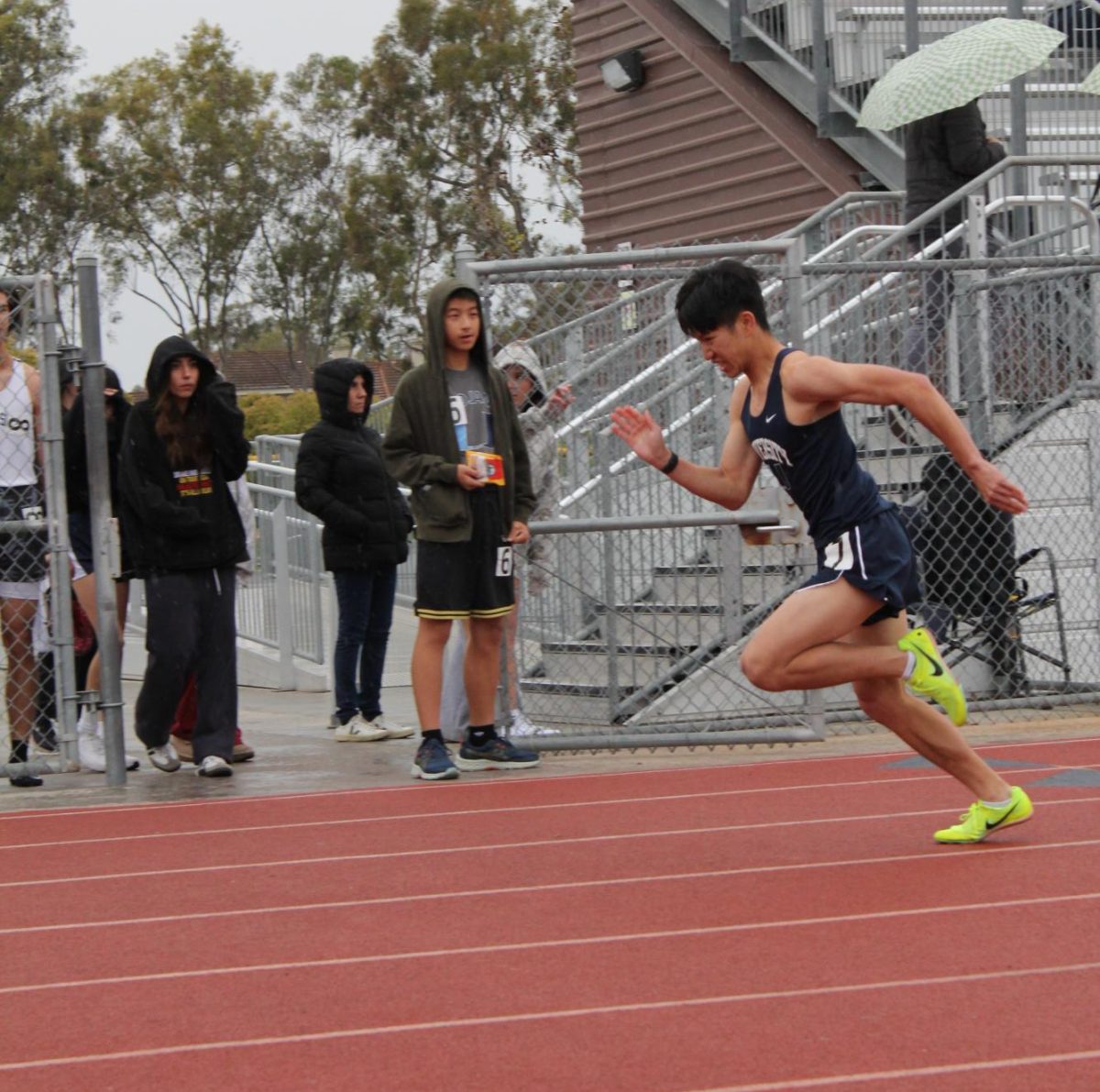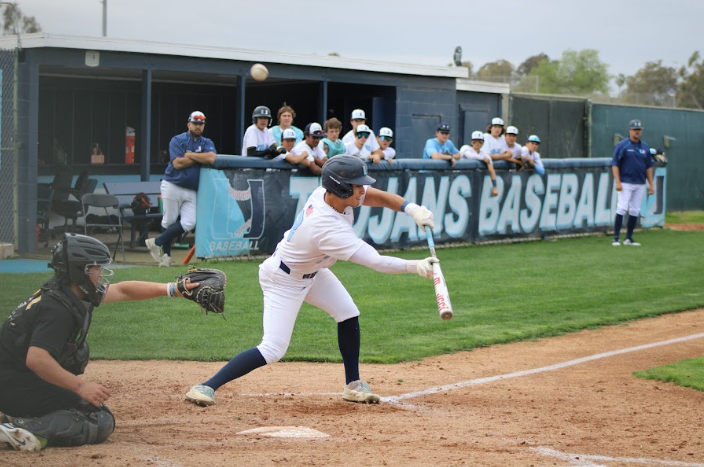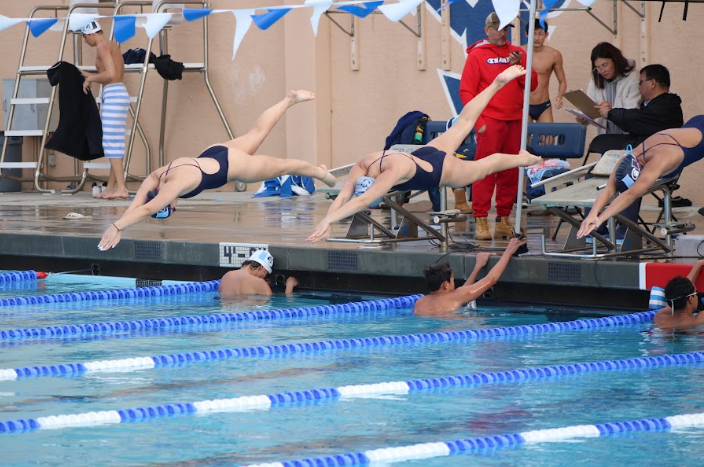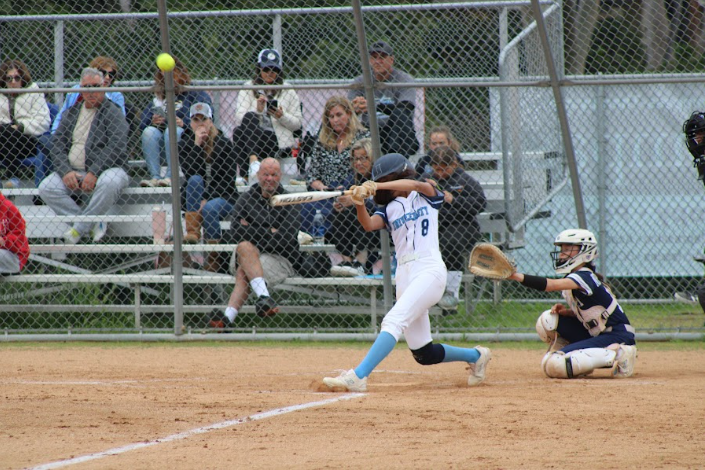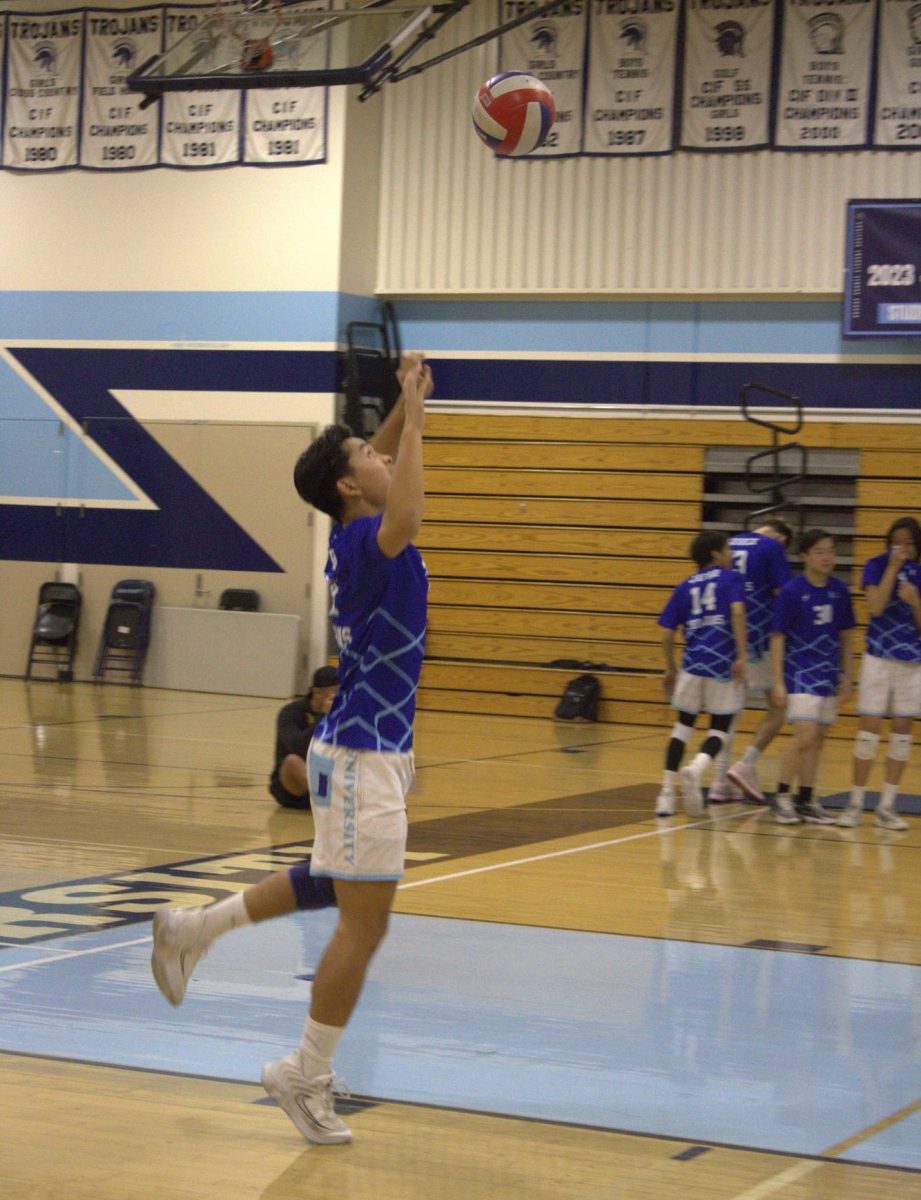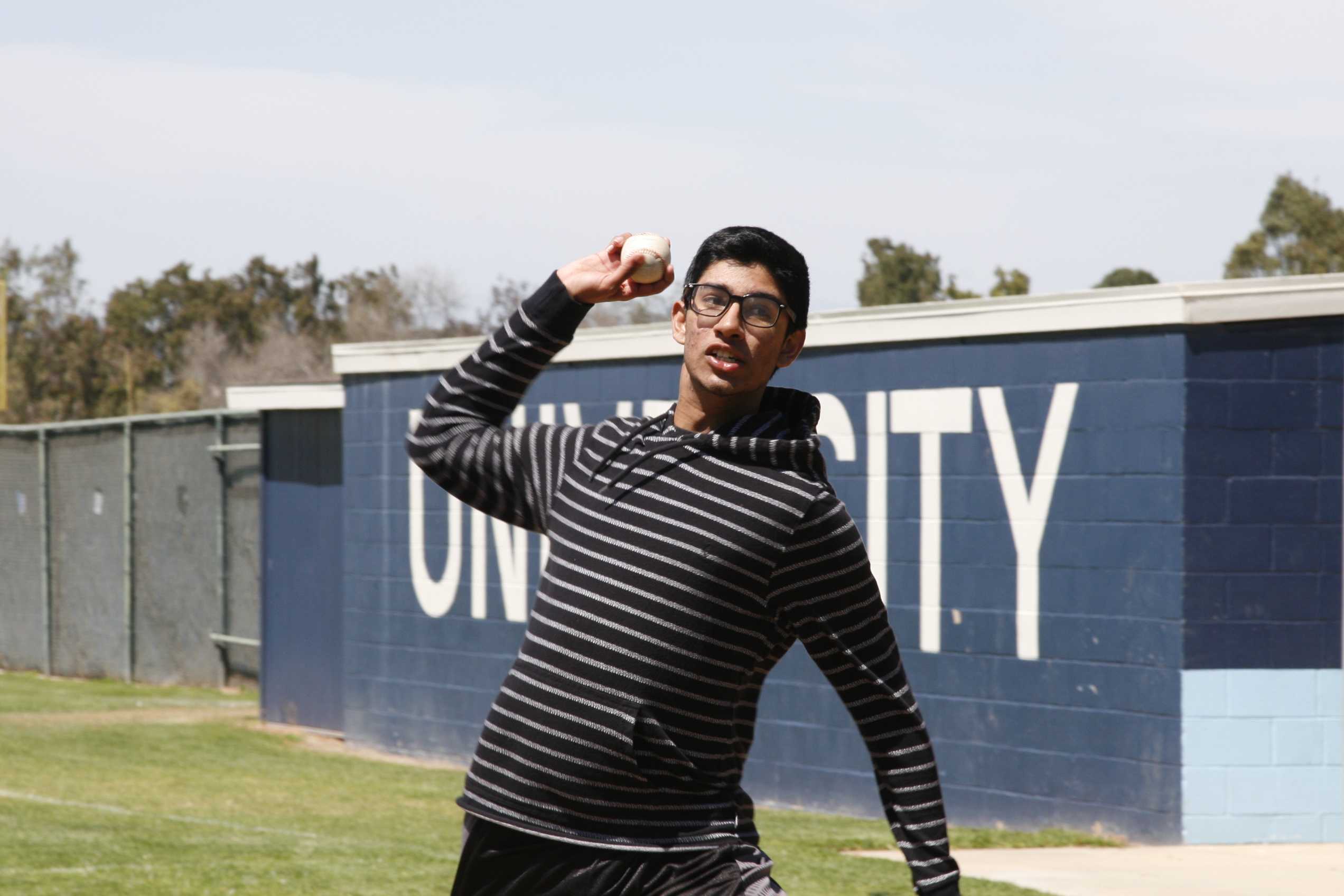
By SHIVAM SUDAME
Sports Editor
The legendary Pete Rose once questioned, “in what other sport can you fail seven out of ten times and still make the Hall of Fame?” He would know, as the switch-hitting Hall of Fame utility man cracked his 4,256 hits with a .303 average. And he’s right. If you shoot 45% in the NBA, you are shooting at right about the average. If you hit .450 in the MLB, your last hit ball is on the way to Cooperstown to showcase the greatest hitting season in the league’s 149-year history by an unbelievably large margin. There’s a reason Pete Rose is right. Hitting a baseball may be one of the most difficult thing in sports. I decided to enlist the help of the UHS Varsity Baseball team to test this notion, as well as gauge my abilities in other aspects of America’s pastime.
Ryan MillerWe started off with some hitting. Pitching to me was junior pitcher
Kahi Rodrigues. A kid with a slight body, Miller still managed to pump his fastball in the high 60s to low 70s. Miller’s advantage, however, was not his velocity; his best weapon on the mound was his pinpoint accuracy. I stepped into the box not knowing what to expect. I knew my successes would be few, but I was hoping that I’d get lucky and drive a ball to the outfield. I hit the ball four times out of perhaps 50 pitches. Two of them were foul balls. The other two were weak grounders that would have been a routine out for the shortstop. Yelling advice from behind the plate was senior catcher
Adam Barnett, while senior right fielder
waited in vain in the infield for me to hit a ball hard enough that he could field it. A word to those who think hitting a ball can’t be too hard: the amount of time you get to guess where the ball will be by the time it gets over the plate is minute. I found myself repeatedly swinging under the ball, committing the cardinal sin in hitting that only superior hand-eye coordination can compensate for (ex. Vladimir Guerrero): dropping my hands. What a swing should look like is a straight line from the shoulder to the path of the ball. What my swing looked like was an amateur golf player trying to drive a ball 350 yards of the tee. My swing was uncontrolled, inefficient, and just terrible. After repeated failures, I decided to move on to something else: fielding.
The term “fielding” in baseball is extremely vague and covers a large variety of positions. The outfield must be good at reading balls off the bat and camping themselves under a fly ball, as well as being able to run long distances at high speeds to make sliding, diving, and leaping catches. They must have an incredibly strong arm as well to hose runners at any base. The infield must have extremely quick reflexes, along with the ability to make awkward, off-balance throws across the diamond. Catchers can completely change the outcome of a game based on how they call a game, the amount of runner who steal on them, and their framing ability. Framing is an art in which the catcher positions his glove during and after catching the pitch in a way that will influence the umpire to call the pitch a strike. Given my lack of speed, reading ability, and arm strength, I skipped fielding in the outfield for my own self-respect. Sorry. Instead, I went straight to the infield. Now, I am a Yankees fan. I grew up dreaming of making Jeter’s signature throw, contorting his body in the air like a cat. Nothing like that happened this day. The ball doesn’t bounce predictably on that infield dirt. They say to attack the ball, as if you sit on it, it will eat you up. But trust me; when that ball is smoked right at you, you don’t naturally just move towards it. The very first ball I was fielding ate me up, just escaping my glove and attacking my left shin. That taught me quick to bend those knees and get up to the ball. Switching to different positions around the infield, the importance of agility and arm strength became increasingly clear.
My throws across the diamond from third were so weak that it seemed as if the batter could jog to first and get there in time. They also claim that first base is the easiest position to field, but the importance of a good first baseman cannot be understated. Being able to dig balls out of the dirt or stretch forward so that the ball hits the glove before the runner can save runs and change ballgames. After going around the entire infield, we moved to the center of the infield, and possibly the center of the sport: the mound.
The mound is way higher than it looks on TV. You can’t get a feeling for how it feels to throw from the mound until you get on it. Miller guided me through the basics of it: a short leg kick, followed by a lunge forward, after which you plant and throw the ball, finishing with your hand at your target. Kahi was the designated batter for my pitching, while Barnett caught behind the plate. From the batter’s box, the strike zone looks amazingly large, such that it seems almost everything is a strike. From the mound, it looks like the size of a smartphone. I threw one strike. One. Kahi’s metal bat pinging my pitches around the field didn’t do much for my confidence, either. Quickly realizing this might be my worst position, I quickly decided to switch to the one position that could perhaps turn my balls into strikes, being the catcher.
It stings. The glove looks like a swollen grapefruit, but the ball still stings through it. Squatting down for over a hundred pitches seemed like hell to me after my legs began to burn catching thirty pitches. We decided to do a “pop time” test, which counted the time it took for a ball to hit the glove of the second baseman from the time it hit the glove of the catcher.My best pop time, after repeated trials, was 3.2 seconds. Kahi got 1.9. To put that in perspective, reigning MLB Gold Glove catcher Martin Maldonado of the Los Angeles Angels has a pop time of 1.8 seconds. It came as no surprise to us though, given that Kahi threw out about 80% of runners last season. Teams have seemingly stopped running on him this season; I wouldn’t run on him either.
As baseball attempts to rebirth the sport through rule changes and other factors to speed up the length of the average game, it’s key to remember what sport we are talking about. Baseball, for well over a century, has been an event at which families, friends, and even strangers can talk, eat, and be entertained.
Baseball has never been about electric gameplay, with high-flying acrobatics or physical contact. Baseball is a sport that takes incredible skill to play, and patience to watch. It gives us time to wind down and relax, serving as a break from the stress and work of daily life. Appreciating these athletes becomes very easy to do after watching them play just a few times. Just like the general public, I can’t play the game of baseball. I guess that’s why for now, I’ll just stick to writing.




